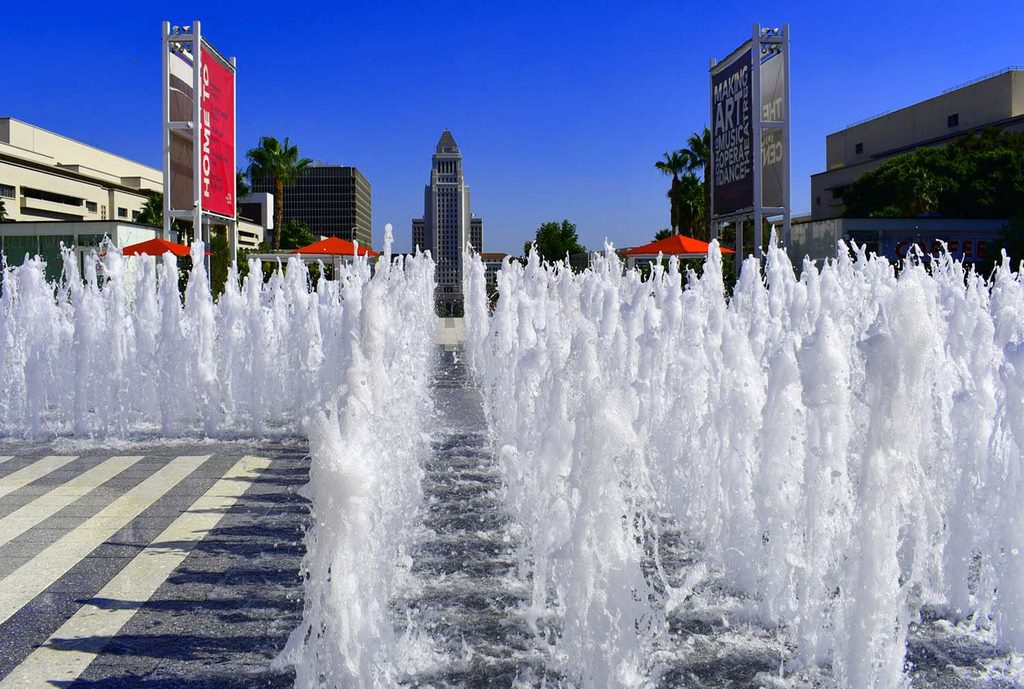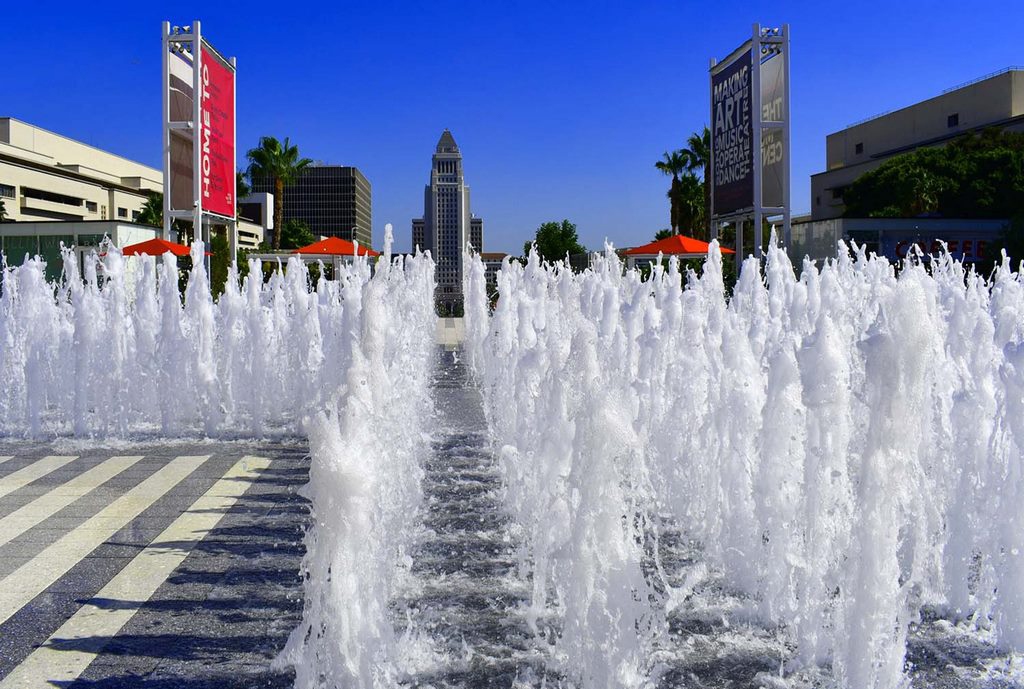Making the Public Leap


It happens all the time. Professionals who start their careers in a residential setting will at some point venture into the world of public water. When they attempt to make the leap, they encounter a whole new working environment that will either
expand their horizons into the commercial market, or force them back into the world of solely residential pools. More often than not, the latter is the case, here’s why:
There’s a tendency among many watershapers to think that “pools are pools” and they can’t be that much different, whether it’s in someone’s backyard or at the YMCA. That’s an error in judgement. The only things that are truly the same in residential and commercial pools are the white plaster and the water coming out of the tap that you use to fill it.
The cold fact is, working on commercial (or public) projects is completely different than in the residential (or private) market. Unfortunately, the breadth of those distinctions is completely obscure to those who have never been through the commercial process before. That’s why time and time again, we see contractors get into deep trouble because they had no idea the rigors and requirements involved.
COMMERCIAL PERSPECTIVE
Our firm, Holdenwater, Fullerton, Calif., designs both private and public swimming pools, spas and water features. The process is so different between public and private that we have two different departments to handle each type of project. Over our decades of experience, we’ve learned that the specific nuances and differences are so broad, it’s hard for most people to bounce between the two.
Likewise, contractors who come to us seem to fit into one of two categories, those who understand the challenges of working on commercial projects, and those that don’t. All too often, we wind up serving as the first “tour guide” for uninitiated builders when they first dabble in the public arena.



| Commercial work requires a level of documentation that you don’t often see in residential settings. This equipment set, for example, was detailed in a precise perspective rendering and then again in a 3D view, leaving no room for interpretation when installing the actual set. |
It typically starts when we receive an email or call requesting our services for design documentation for a public project. This first contact, and subsequent discussions, can sometimes be very disturbing for builders if the project has already been contracted with an owner or general contractor.
The big problem in most situations is that the contractor does not set aside enough budget for the design documentation and permitting process. Public bathing environments have their own unique language and procedures, and they are intensely scrutinized by a county or state regulatory agencies. By contrast, most private environments have only a local or city agency plan review and inspection process, which is a much simpler and forgiving endeavor.
Almost without exception, health departments are fierce marshals of federal, state and county codes and they scrutinize the design plans very closely for any stray or missing information. If you haven’t been through the process before, it is almost guaranteed they will find something that’s not right or missing.
DEEPER DESIGN
Documentation required to satisfy the regulations for public pool approval is a very detailed and heavy package that speaks to many different regulations, Codes, industry standards and established protocols for general public safety. There is ADA, IBC, MAHC (CDC), NSF, NEC, ACI, as well as the typical State/City Building Codes. You have to be familiar with all of them and how they apply to public water.
On top of this, each health department has a list of unpublished “policies” that they have developed based upon their experiences in the field.This list grows by the day and is a culmination of every event that they encounter with projects under construction. Understandably, this is the real wild card for designers. In our work, we deal with each one based upon our experience with that specific department.
Larger markets have more policies as they have more pools in production, while more rural areas have much shorter lists due to less volume of exposures. The first agency review of the plans for public pools will generate the list of these for us to refine, but sometimes it can become maddening for the builder who has never dealt with this before.A residential pool plan set can be as little as a single sheet of 11-by-17-inch paper with a site plan and a set of standard structural engineering sheets attached to the back it. Public pool plan sets will be much larger. Our largest set to date is 55 sheets at 30-by-42-inch sheet size.


| Above-grade installations are perhaps the least forgiving of all commercial projects. When you’re putting a body of water above the ground in a building, the level of planning required is extreme and there is no room for error. Issues such as waterproofing and stray current mitigation take on a entirely new meaning in this challenging projects. |
With the above-mentioned code hurdles, amount of information required, and the duration that plan check takes for approval, it’s easy to see how the cost to prepare the plans and get agency approval is surprisingly steep. Another eye-opening surprise for builders is that health-agency approval can take up to six months; and, only then can you submit for building and safety approval after the health department has stamped the plans.
In many instances, the reason first-time builders get awarded contracts for public pools is because their bid proposals were so low since they did not take all of this into consideration when preparing their bid. Unfortunately, they just shorted themselves profit they are not going to make, and that can add up to tens of thousands of dollars.
In effect, that means when we receive the first phone call, the contractor is already in a hole, both in terms of time and money. They don’t know how long it takes to get that permit or much it will cost.
DETAIL DEVILS
The other big part of the disconnect is that there are all sorts of things that you need to build into your proposal: the coping, the tile, the hydraulics and the structural engineering, they’re all different in commercial settings. Some of these come as a huge surprise. The reinforcing steel in a bond beam, for example, is oftentimes a completely different configuration and it includes twice as much steel as a residential pool. It takes more steel and time to install. Again, not accounting for that in the estimate will make for an artificially low price.
There are countless other examples. One of the most common involves handrails. It seems like such a simple thing to most builders, but in commercial work you have a range of specific requirements for things like the height off the deck, where the rails are mounted and how — and the health department will measure it to an eighth of an inch.
That single issue a non-compliant rail — can create an expensive mess if the contractor has already put the sockets in the concrete. They have to use a jackhammer to remove and replace the sockets to accommodate a different rail. If they don’t, a problem like that can hold up the approval process, meaning the project is delayed and the contractor won’t get paid until they fix the problems.


| Things get even more complicated when you step away from swimming pool and entre the world of today’s public fountain displays, where complexity and precision test the mettle of even the most accomplished watershapers. |
We recently heard from a builder that couldn’t get final payment on a project because the health inspector wouldn’t sign off on it. The hold-up was the main drain in the spa was raised more than 1 -inches above the floor. Most of the time, that’s not going to be an issue because inspectors rarely jump in a pool and measure the drain. In this case, they did. The solution was relatively simple, replace the drain grate, but that was already the second set of grates the builder had installed on the project.
Lights are similar. Many builders don’t know that in commercial work, only white lights are acceptable and with a certain number of Lumens per square foot of water surface area. We’ve seen situations where builders are forced to replace all the lights, which can be numerous in a large commercial pool. In many cases, those kinds of missteps may not be catastrophic by themselves, but making the necessary fixes can add up in a hurry. It’s death by a thousand cuts, and it’s made worse when the contractor has already underbid the project in the first place.
On top of all that, the physical installation is completely different. For example, many builders don’t realize that once you start working with anything bigger than six-inch plumbing, you don’t just take two strong guys and muscle the pipes into place. You need to use rigging known as a “come along” with straps and ratchets you use to position large-diameter pipes and fittings. Every connection takes more time and manpower and you have to have equipment on hand that you don’t typically need with smaller plumbing.
Also, you’re dealing with Schedule 80 PVC for many areas of the plumbing network, so there’s a completely different pricing structure. Hanging pipes from ceiling and going through structural walls and a long list of other added challenges add time, labor and cost that is almost always left out of the bid or proposal.
Inexperienced builders will encounter those kinds of unforeseen challenges and costs in almost every aspect of a commercial project.
RESTRICTIVE REQUIREMENTS
The level of scrutiny on a commercial project is 500% greater than on a residential installation. Between the city, the health department, the general contractor and the consultant, you’ve got multiple layers of people who know that if you use the wrong screw on a drain grate, it won’t be accepted.
Agencies with authority over pool installations maintain lists of approved products. Most newbies we’ve encountered don’t even know where to find that list, or in some cases don’t even know they exist. It comes as a surprise you can only use certain pumps, lights, filters, controllers and chlorinators.


| From ADA requirements to health-department rules and regulations, to the multi-faceted needs of commercial clients and their stakeholders and patrons, building commercial pool facilities requires serving many parties with vested interest — and that takes time, resources and experience. |
We run into builders all the time who don’t know that NSF-50 certification is the first benchmark used to determine whether or not you can use a given product on a commercial pool. In Los Angeles County, for example, there’s a second layer of approval where if the county disallows a particular product, for whatever reason, you cannot use it. (Note: LA County and other major metropolitan hubs are a bellwether for many other counties in California and throughout the U.S.)
All of that hassle can be avoided if you’re aware of the requirements at the start, and you build those costs into your bids. The challenge is simply that many contractors making the commercial leap don’t know what they don’t know. That starts with the increased liability, where not only are you in danger of not getting paid for not complying with code requirements, if someone ever gets hurt, you are going to be part of a lawsuit.
The moral of the story, when you jump from residential to commercial work, it pays to look before you leap.
Mark Holden is president and founder of Holdenwater, a design and engineering firm focusing on complex commercial and residential watershaping projects. Shawn Tracy is a project manager with Holdenwater specializing in the public water environments.









